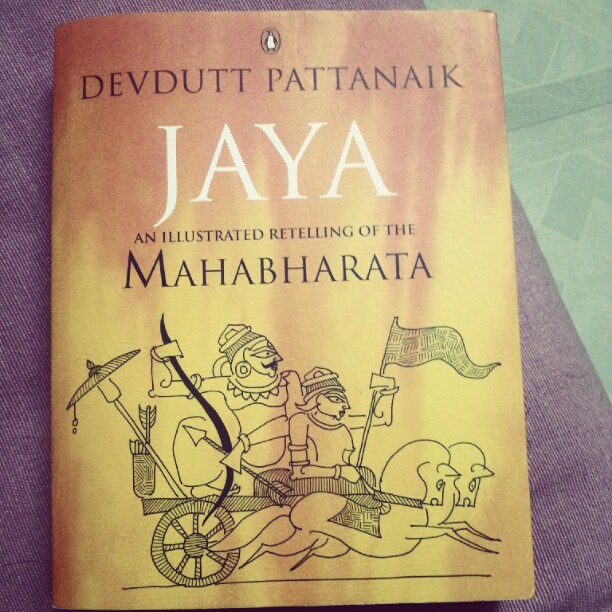Devdutt Pattanaik
I consider myself more well-versed with the Mahabharata than the average person, because of my interest in Hindu mythology and the amount of reading I’ve done on the subject. But I’m really glad I read Jaya, not just because of the small details I learned about (I counted 6 things I hadn’t known about – Sahadeva’s precognition gained by eating Pandu’s flesh, Draupadi cursing dogs to copulate in public for stealing Yudhishtira’s slippers, Vibhishana being present at Draupadi’s swayamwar, a couple of stories on why Krishna stepped in to protect Draupadi when Dusshasana tried to disrobe her, why Shakuni did his best to ensure the destruction of the Kuru clan, Draupadi’s regret over Karna and at least a couple more interesting tidbits) but because of the wonderful lessons it provides. The author also mentions several variations of the tale, regional renditions and folk variations adding layers to the original story. Even as one feels the familiarity thanks to the places (which still exist) mentioned and can identify with the experiences and tribulations of the mortal characters, there is also an awe created by the elements of divinity.
Jaya’s excellent illustrations and the simple yet elegant and evocative storytelling took me back to a time when I first started hearing these stories – childhood. So vivid is the prose that one can easily create visualisations of the events. The explanation of events are done on many planes – rational, metaphysical, spiritual, bringing a lot of clarity to the complex tale. The concepts of dharma and justice are explained beautifully and even as the Pandavas grow their perspective during their exile and their pride, anger etc get tempered before and after the war, there is tremendous learning for the reader too. It is easy to understand why this is indeed considered the greatest story ever told, and continues to be relevant through ages. The original tale is epic, and so is the narration in Jaya. Very highly recommended.


Leave a Reply